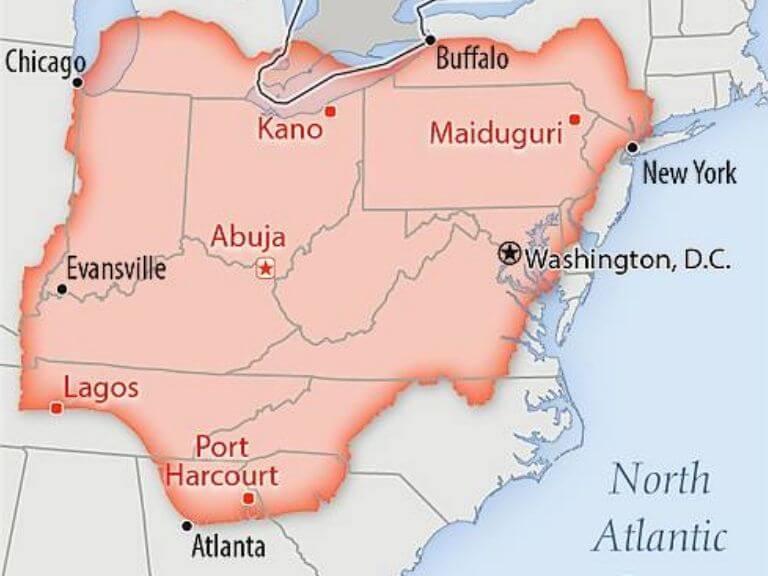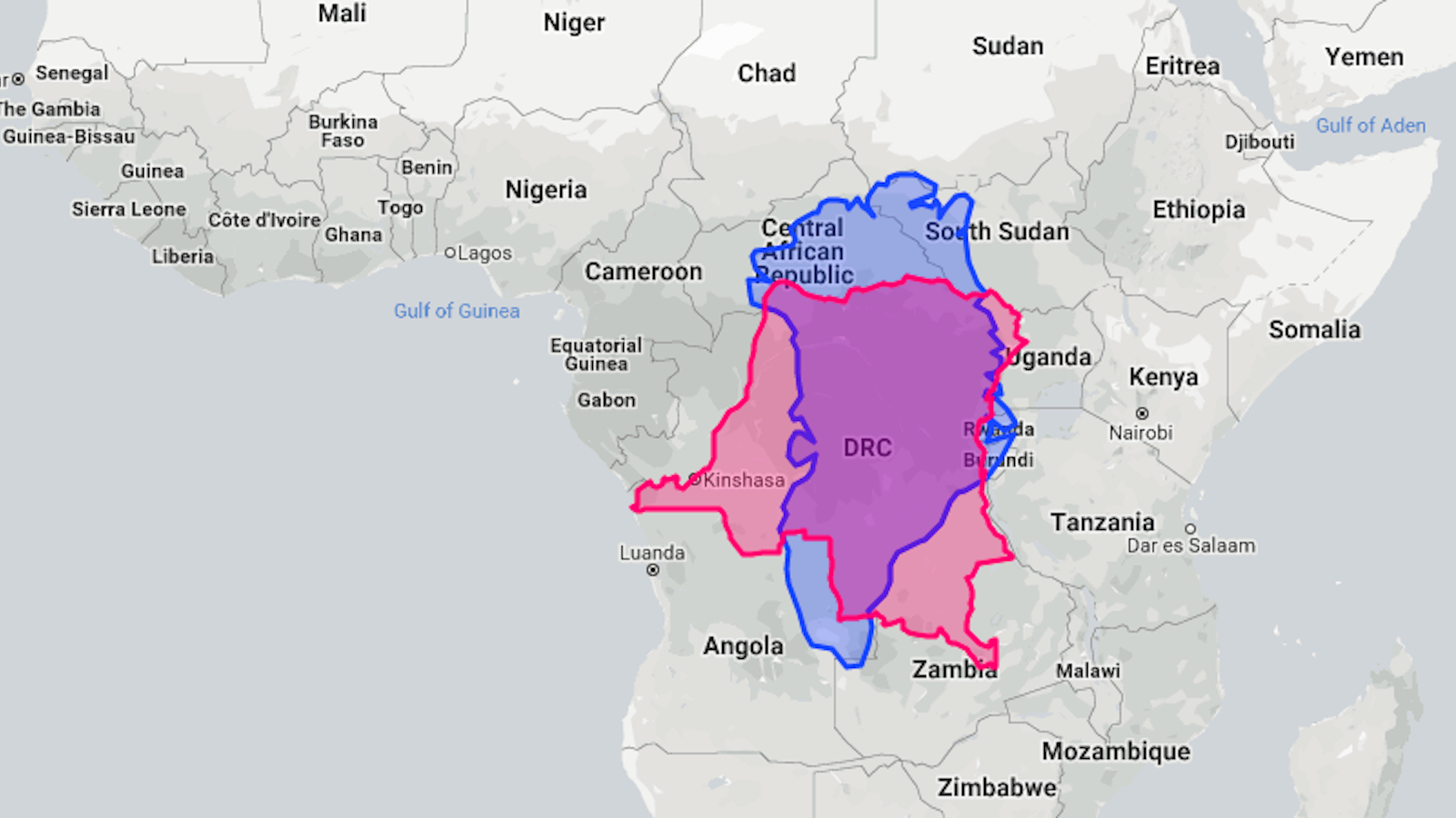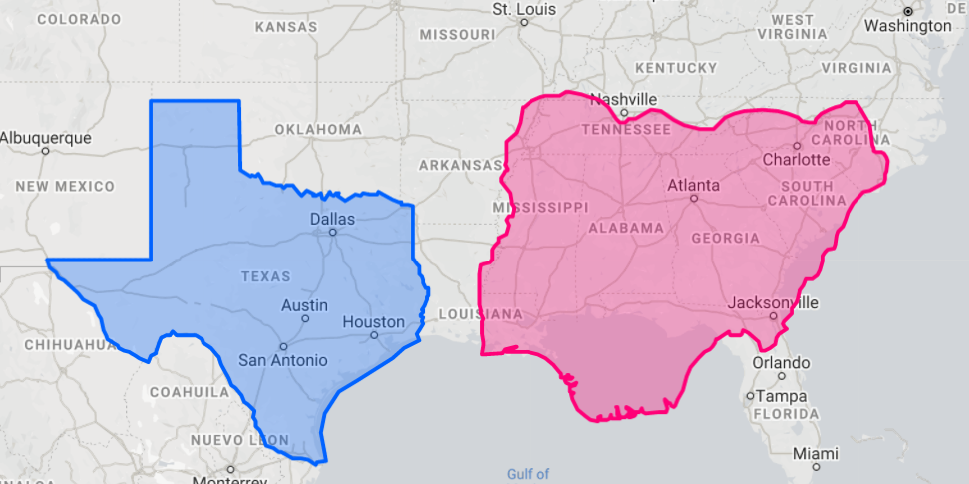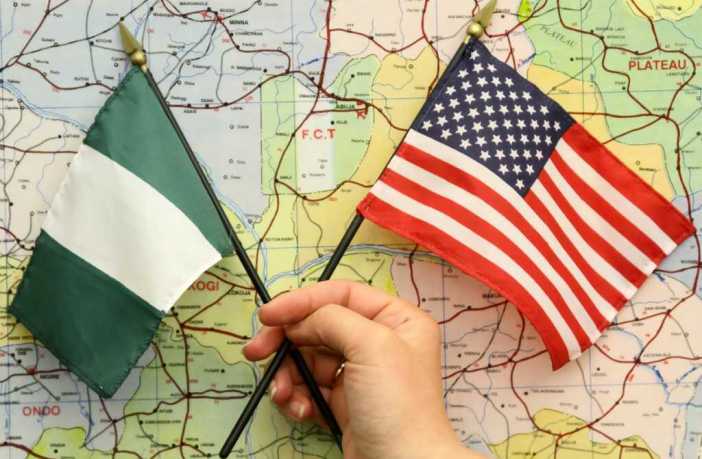Size Of Nigeria Compared To Us

Nigeria, often hailed as the "Giant of Africa," and the United States of America, a global superpower, are two nations vastly different in size, population, and landscape. Understanding the sheer geographical disparity between these two countries provides crucial context for appreciating their respective economic, social, and political dynamics.
This article delves into a detailed comparison of the land areas of Nigeria and the United States, highlighting the implications of this difference and offering insights into the diverse characteristics of each nation. The primary goal is to present a clear, factual account grounded in publicly available data.
A Tale of Two Lands: Size and Scale
The United States boasts a total land area of approximately 3.79 million square miles (9.83 million square kilometers). This makes it the third or fourth largest country in the world by total area, depending on whether disputed territories are included. This vast expanse encompasses a diverse range of ecosystems, from the frozen landscapes of Alaska to the sun-drenched beaches of California.
Nigeria, in comparison, covers a land area of approximately 356,669 square miles (923,768 square kilometers). Data are derived from the United Nations Statistics Division and the Nigerian National Bureau of Statistics. While significantly smaller than the United States, Nigeria's geographical footprint is substantial within the African continent, exceeding the size of many European nations.
Quantifying the Difference
To put this into perspective, the United States is roughly 10.6 times larger than Nigeria in terms of land area. You could fit approximately ten Nigerias within the borders of the United States. This simple comparison underscores the considerable difference in scale between the two countries.
This size disparity has ramifications extending to internal logistics and resource availability. The United States faces challenges in infrastructure development across larger distances. Nigeria faces other limitations due to its comparatively smaller land mass.
Population Distribution and Density
While the United States is substantially larger, Nigeria boasts a significantly higher population density. According to the United Nations Department of Economic and Social Affairs, the United States has a population density of approximately 94 people per square mile.
In contrast, Nigeria has a population density of over 600 people per square mile. This creates distinct challenges and opportunities for each nation, especially concerning resource management, urban planning, and infrastructure development.
The Human Impact
Consider Lagos, Nigeria's largest city and economic hub. Lagos grapples with the challenge of accommodating a vast population within a relatively limited space. The population strains local infrastructure, housing, and sanitation.
The United States, with its lower population density, has the space to build more distributed networks of cities and infrastructure. This spatial separation allows for more effective utilization of land and natural resources.
Economic Implications of Size
The geographical scale of the United States has historically provided significant advantages in terms of access to natural resources. From vast oil reserves to abundant agricultural land, the US benefits from a diverse and plentiful resource base. Nigeria also has oil reserves and fertile land, but on a smaller scale, and its resources are more concentrated.
The size of the US also impacts the internal market of the country. The large internal market fuels domestic industries and provides economies of scale. Nigeria's economy, while growing, faces challenges in expanding due to resource constraints and regional disparities.
Trade and Global Influence
The United States' expansive borders and diverse resources contribute to its global trade dominance. Nigeria, with its smaller size, must often rely on imports to meet domestic demands, which can impact its balance of trade.
Environmental Considerations
The sheer size of the United States presents unique environmental challenges. The country's carbon footprint is substantial due to its industrial activities and high energy consumption. Management of large areas requires extensive policy and regulation.
Nigeria faces different environmental challenges, including deforestation, desertification, and pollution from oil production. These challenges are amplified by population density and the need for land to support agricultural production. Nigeria's government is attempting to mitigate these issues by implementing environmental laws.
Sustainable Development
Both the United States and Nigeria are working to address their respective environmental issues. The US focuses on renewable energy sources and energy efficiency. Nigeria is looking at improving its environmental policies and addressing issues like oil spills.
Conclusion: A Comparative Perspective
The size difference between Nigeria and the United States profoundly influences their economic, social, and environmental realities. The US leverages its vast landscape for trade and resource management. Nigeria navigates the complexities of high population density.
Understanding these differences provides essential context for appreciating the unique challenges and opportunities each nation faces. The article sheds light on the significance of geographical size and its implications for diverse aspects of life and governance in both countries. By presenting a comprehensive and fact-based analysis, this exploration promotes a deeper awareness of the distinct characteristics that shape these two important global players.
![Size Of Nigeria Compared To Us [VERIFIED] Size of Nigeria compared to the USA | Info, Guides, and How-tos.](https://explain.com.ng/wp-content/uploads/2021/12/11-1-700x570.png)
![Size Of Nigeria Compared To Us [VERIFIED] Size of Nigeria compared to the USA | Info, Guides, and How-tos.](https://explain.com.ng/wp-content/uploads/2021/12/Screenshot-3.png)





![Size Of Nigeria Compared To Us [FACTUAL] Size Of Nigeria Compared To New York | Info, Guides, and How-tos.](https://explain.com.ng/wp-content/uploads/2021/12/Screenshot-6.png)


![Size Of Nigeria Compared To Us Nigeria vs Washington DC [Accurate Size Comparison] | Info, Guides, and](https://explain.com.ng/wp-content/uploads/2021/11/Screenshot-196.png)
![Size Of Nigeria Compared To Us [VERIFIED] Size of Nigeria compared to the USA | Info, Guides, and How-tos.](https://explain.com.ng/wp-content/uploads/2021/12/Screenshot-2-700x449.png)
![Size Of Nigeria Compared To Us Nigeria vs Washington DC [Accurate Size Comparison] | Info, Guides, and](https://explain.com.ng/wp-content/uploads/2021/11/Screenshot-195.png)

![Size Of Nigeria Compared To Us [ACCURATE] Size of Nigeria compared to California | Info, Guides, and](https://explain.com.ng/wp-content/uploads/2021/11/Screenshot-355.png)

![Size Of Nigeria Compared To Us [ACCURATE] Size of Nigeria compared to Canada | Info, Guides, and How-tos.](https://explain.com.ng/wp-content/uploads/2021/11/Screenshot-348.png)
![Size Of Nigeria Compared To Us [Detailed] Size of Nigeria compared to Alaska | Info, Guides, and How-tos.](https://explain.com.ng/wp-content/uploads/2021/11/Screenshot-361-1.png)
